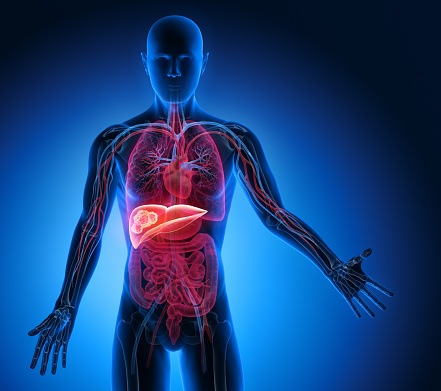
Patients with concomitant end-stage liver disease and severe chronic kidney disease or end-stage kidney disease (ESKD) are candidates for simultaneous liver and kidney transplantation (SLK). In recent years, the number of SLK performed in the United States has been consistently on the increase.
SLK is traditionally performed using a subcostal incision for the liver allograft and a lower abdominal incision for the kidney transplant (dual incision [DI]). During a virtual presentation at the 2021 American Transplant Congress, researchers at Virginia Commonwealth University, Richmond, report that a single subcostal incision (SI) is performed for SLK at their center. Led by D. Imai, the researchers presented results of a study designed to assess outcomes using single and dual incisions for SLK. The presentation was titled Single Incision Simultaneous Live Kidney Transplantation: Outcomes and Feasibility.
The researchers conducted a retrospective analysis of all SLK performed at Virginia Commonwealth University from January 2015 to November 2020. The analysis included statistical comparisons of demographic characteristics, complications, and intraoperative findings and complications after SI and DI. Subgroup analyses were conducted based on early and late experience with single incision SLK.
During the study period, a total of 34 SLK were performed; of those, 18 were DI and 16 were SI. The two groups were similar in MELD (Model for End-Stage Liver Disease) score, age, and indications for transplant. Patients in the SI group had higher body mass index; the difference was not statistically significant.
Cold ischemia time of kidney transplantation was significantly shorted in the SI group (P=.002). In the early era analysis, complications were slightly higher in the SI group; the difference did not reach statistical significance. Both groups were similar in hospital length of stay and warm ischemia time. In the SI group, post-operative morphine requirements were lower, as was overall operative time, compared with the DI group.
In conclusion, the researchers said, “Single incision SLK is technically feasible and has comparable outcome to dual incision SLK. Single incision SLK was associated with shorter cold ischemia time for kidney transplant as well as lower overall operative time without any impact on outcome. Further study is required to delineate additional benefit of single incision SLK with particular focus on patient acceptance and recovery from the surgical wound.”
Source: Imai D, Sambommatsu Y, Khan A, et al. Single incision simultaneous liver kidney transplantation: Outcomes and feasibility. Abstract of a presentation at the virtual 2021 American Transplant Congress (Abstract #983), June 5, 2021.




 © 2025 Mashup Media, LLC, a Formedics Property. All Rights Reserved.
© 2025 Mashup Media, LLC, a Formedics Property. All Rights Reserved.